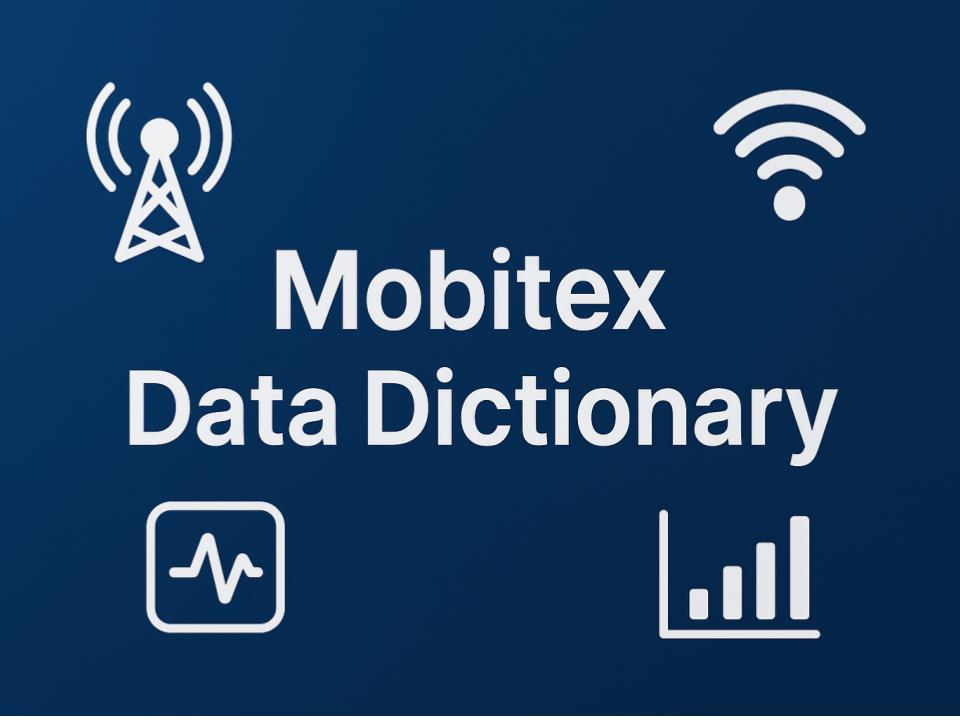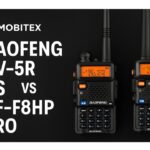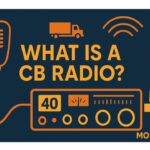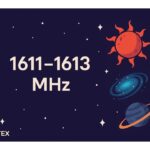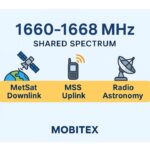⚙️ Core Frequency & Identification Fields
| Column Header | Description | Example |
|---|---|---|
| Center Frequency (MHz) | Central frequency of the band in MHz. | 433.92 |
| Tax Band Family | High-level ITU family (e.g., VHF, UHF, SHF). | UHF |
| Tax Band Class | Sub-classification (e.g., ISM, Public Safety, Mobile). | ISM |
| Tax Service Category | Category of primary services operating in the band. | Fixed / Mobile |
| Tax License Type | Regulatory license class (licensed, unlicensed, shared). | Unlicensed |
| Tax Regions | Geographic or ITU region coverage. | Region 1 (Europe) |
🌍 Frequency Geometry & Physical Parameters
| Column Header | Description | Example |
|---|---|---|
| Wavelength (m) | Calculated physical wavelength in meters. | 0.69 |
| Band | Common or regulatory band name. | “70 cm Amateur Band” |
| Lower Band Frequency Limit | Lower edge of the band (MHz). | 430 |
| Upper Band Frequency Limit | Upper edge of the band (MHz). | 440 |
| Primary Common Name | Most recognized industry name for the band. | 433 MHz ISM Band |
| Itu Region 1 / 2 / 3 | Allocation presence per ITU region. | Yes / No |
| License Type | Type of access required (licensed, light, exempt). | License-exempt |
| Primary Application | Main use (e.g., IoT, Cellular, Aviation). | Short-range IoT |
| Primary Services | ITU service allocation. | Fixed / Mobile |
| Duplexing | Duplex scheme (FDD, TDD, Simplex). | FDD |
📡 Emission & Power Characteristics
| Column Header | Description | Example |
|---|---|---|
| Eirp Indoor Limits | Max EIRP indoors. | +10 dBm |
| Eirp Outdoor Limits | Max EIRP outdoors. | +20 dBm |
| Psd Limit | Power Spectral Density limit. | –13 dBm/MHz |
| Out Of Band Emission (dBm/MHz) | OOBE limit in dBm/MHz. | –30 |
| Spurious Emission (dBm) | Maximum spurious output. | –36 |
| Emission Mask Class | Regulatory emission mask type. | Class B |
| Rx Blocking Min Db m | Minimum blocking performance of receiver. | –15 dBm |
| Receiver Selectivity Notes | Commentary on receiver filtering. | “Adjacent channel rejection > 65 dB” |
| Guardband Minimum (kHz) | Minimum guard band required between allocations. | 100 kHz |
| Uplink Pairing / Downink Pairing | Paired uplink/downlink bands for FDD systems. | 824–849 / 869–894 MHz |
| Channelization | Standard channel spacing or plan. | 200 kHz |
| Waveforms | Typical signal formats or waveforms. | OFDM, FSK |
🔄 Neighboring Bands & Spectrum Context
| Column Header | Description | Example |
|---|---|---|
| Lower Neighbor Use / Upper Neighbor Use | Summary of adjacent band usage. | Paging / LTE |
| Guard Or Pair | Whether band edge is guard or paired allocation. | Guard |
| Noise Floor | Typical noise power density (dBm). | –114 |
| Occupancy | Estimated channel occupancy (%). | 35 % |
| Interference Cases | Known real-world interference scenarios. | “433 MHz garage remotes collision” |
| Lower Neighbor Band / Range / Upper Neighbor Label / Range | Specific adjacent frequency ranges and identifiers. | “425–430 MHz LRS / 440–450 MHz LMR” |
| Licensing Model | Type of licensing mechanism. | Unlicensed |
| Typical Services Devices | Example service types or devices. | LoRa nodes, Smart meters |
| Interference Notes | Mitigation or observed issues. | “High RFID traffic in Europe” |
🇺🇸 🇨🇦 🇬🇧 Regulatory Allocations
| Column Header | Description | Example |
|---|---|---|
| USA FCC Alloc | FCC allocation text or reference. | Part 15.231 |
| CA IC Alloc | ISED Canada allocation. | RSS-210 |
| UK Ofcom Alloc | Ofcom allocation summary. | SRD 868 MHz |
| Example 3GPP Bands | Related 3GPP band numbers. | n78 |
| Compatibility Risk Notes | Coexistence and interference risk notes. | “Potential LTE adjacency issues” |
| LTE/NR Uplink & Downlink Bands | LTE and NR (5G) pair numbers. | Band 8 / n28 |
| US/CA/UK Ref | Regulatory reference URLs or footnotes. | ETSI EN 300 220 |
📶 Channelization, Guarding & Market
| Column Header | Description | Example |
|---|---|---|
| Channelization Block Size | Typical licensing block width. | 5 MHz |
| Typical Bandwidths | Common system bandwidths. | 1 / 5 / 20 MHz |
| Duplexing Information | Extended notes on duplex scheme. | TDD with guard gap |
| Guard Bands / Paired Band Info | Extra guard frequencies or paired ranges. | “45 MHz uplink spacing” |
| Market Licensing Model | Market-level licensing approach. | Auction |
| Market Commercial Value | Approx. economic value per MHz-pop. | $0.90 / MHz-pop |
| Market Common Devices | Popular devices in this band. | LTE routers, LoRa modules |
| Market Deployment Density | Deployment intensity. | High urban density |
| Band Family | Frequency family category. | UHF |
| Free Space Path Loss 1 km / 10 Km (dB) | Calculated path loss values. | 92 / 112 dB |
| Fresnel Radius 1St 1 Km M | Radius of first Fresnel zone. | 7.9 m |
| Common Protocols | Typical protocols used. | LoRaWAN, Zigbee |
| Notes | General remarks. | “ISM band shared with RFID” |
| Autocalculated Bandlimits | Auto-derived limits for QA. | OK |
| Occupancy Bucket Pct | Categorized occupancy bucket. | 30–50 % |
| Propagation Notes | Summary of propagation behavior. | Good urban penetration |
🌐 Harmonization & Ecosystem
| Column Header | Description | Example |
|---|---|---|
| Global Harmonization | Degree of international alignment. | Partial |
| Auction Status | Whether auctioned or unlicensed. | Unlicensed |
| Crossborder Coordination | Need for international coordination. | Low |
| Ecosystem Maturity | Maturity of equipment ecosystem. | Advanced |
| Refarming Use | Legacy band repurposing. | Former GSM band |
| Indoor Penetration | Relative penetration quality. | High |
| 3Gpp Band Number | 3GPP numeric band identifier. | n78 |
| Channelization Plan | Standardized channel grid. | 100 kHz steps |
| Guard Band Requirement | Minimum guard band recommendation. | 100 kHz |
| Max EIRP dBm | Absolute max power level. | 36 dBm |
| Latency Profile | Typical latency range. | Low ( <10 ms ) |
| Known Interference | Interferers from adjacent bands. | Bluetooth / Wi-Fi |
| Sharing Mechanism | Dynamic sharing method if any. | LBT, SAS |
| Device Ecosystem Size | Approx. number of products. | > 10 000 |
| Chipset Availability | Vendor support status. | Broadcom, Semtech |
| Operator Deployments | Known mobile operators. | Verizon, AT&T |
| Technology Generations Deployed | Gens present (2G–5G). | 4G/5G |
| Roaming Support | International roaming availability. | Yes |
| Traffic Load Share | Network traffic share estimate. | Medium |
| Device Hotspots (Mhz) | Concentrated use frequencies. | 2400–2483.5 |
| Device Category | Category of equipment. | IoT |
| Protocol Or Standard | Protocol family. | LoRaWAN |
| Typical Use Cases | Common applications. | Smart meters, Sensors |
| Typical Center Frequencies (Mhz) | Representative frequencies. | 868.3 |
| Common Channels Or Profiles | Well-known profiles or IDs. | LoRa EU868 |
| Security Features | Encryption or auth methods. | AES-128 |
| Rule Part (Fcc Or Region) | Governing rule section. | Part 15.247 |
| Lbt Or Fhss Requirement | Regulatory technique required. | FHSS |
| Modulation (Device) | Typical modulation used. | FSK |
| Channel Width (Device) (Khz) | Device channel width. | 125 |
| Device Region Profiles | Regional device settings. | EU, US |
| Per-Region Eirp Or Duty (Device) | Regional power/duty rules. | +14 dBm, 1 % duty |
| Allocation Relevance (Device) | Whether device aligns to allocation. | Yes |
| Adjacent-Band Collision Risks (Device) | Risks of interference from neighbor bands. | High |
| Example Devices Or Skus | Commercial device examples. | Semtech SX1276 |
| Popularity (Installed Base) | Relative adoption metric. | High |
| Real-World Range (Indoor/Outdoor) | Observed range values. | 1 km indoor / 10 km rural |
| Coexistence Tips | Recommended coexistence measures. | Duty-cycle control |
| Antenna Form Factor (Typical) | Common antenna design. | ¼-wave whip |
| Power Source Or Duty Profile (Typical) | Device power type / duty cycle. | Battery / 1 % TX |
| Latency Class | Standardized latency class. | Class 2 |
| Typical Site Spacing Urban / Rural Km | Typical network site distance. | 1 / 5 km |
| Device Hotspots (Scoped & Tagged) | Geo-tagged usage areas. | Europe / US |
| Band Group | Frequency group category (VHF/UHF/SHF). | UHF |
| Summary (<100 words) | Concise summary for display on Mobitex.org. | “The 433 MHz ISM band is widely used for IoT, RFID, and short-range devices …” |
